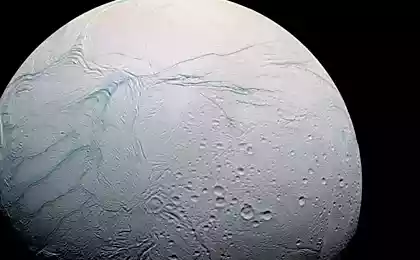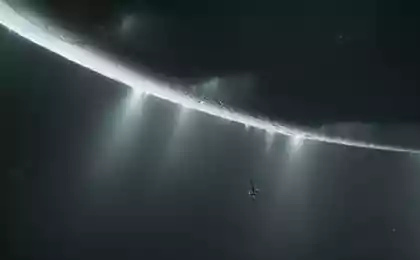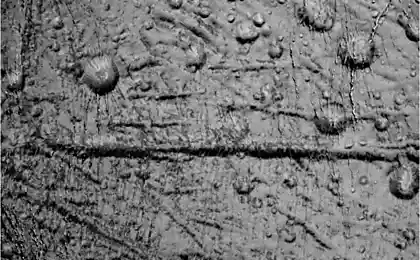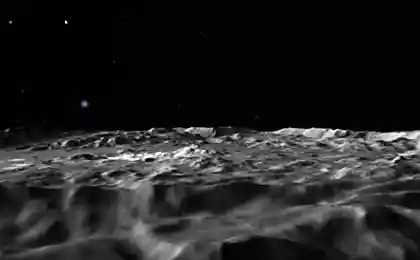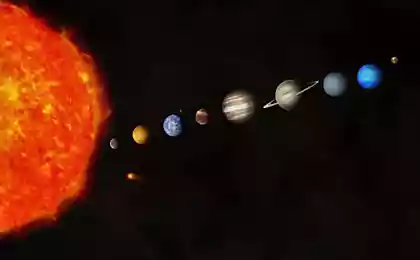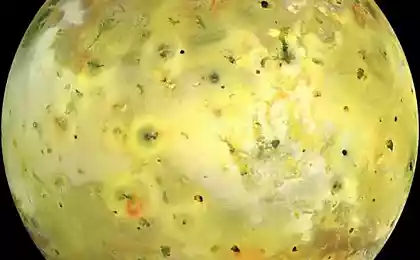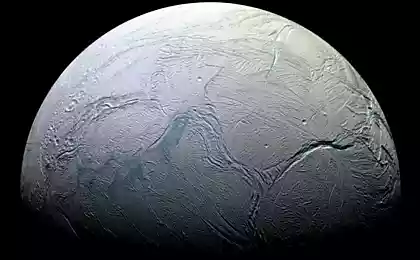413
Is there life on Enceladus?
On Enceladus, Saturn, there is seething ocean, in the depths of which can evolve life, reports Discovery News. This discovery, made by analyzing the data sent from the NASA-owned space probe "Cassini» (Cassini), explains why on the surface of Enceladus has geysers that make their way to the surface through so-called "tiger stripes" - deep furrows on the surface of the satellite. These "ice fountain" Many scientists believe the presence of a sign under the surface of Enceladus, the large ocean. Then, under the ice covering the moon Enceladus were discovered small pools with water at a temperature of about 0 ° C.
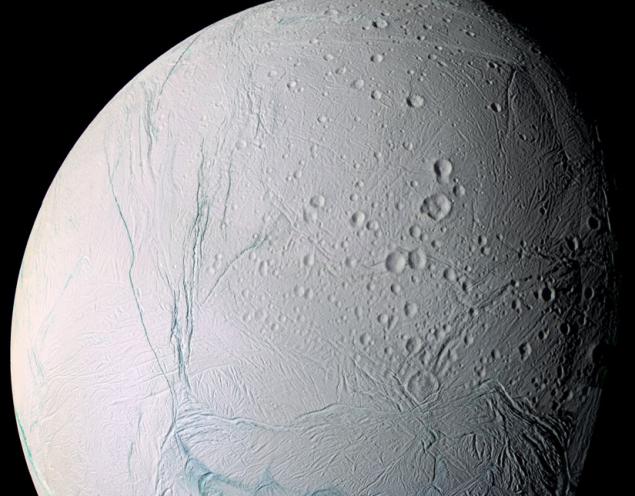
It has long been known that the jets emitted geysers, contain carbon, hydrogen, oxygen, nitrogen, and various carbonates. However, among these elements was not salt - a necessary component for a large ocean.
Last flight of "Cassini" past Enceladus in 2009 have revealed a part of the water from the geysers on Saturn's potassium and sodium. They were not found in the composition of the hot spring water, and ice crystals which fall to the surface with water. Thus we provided indirect evidence of the ocean under the icy surface of the satellite.
Now, however, the data were transcribed temperature measurements done by the "Cassini". It was found that the temperature in the cracks Enceladus is -85 ° C, whereas the temperature on the surface of -201 ° C. This led scientists to conclude that the ocean lurking in the depths of Enceladus consists of warm soda water, which always seeks to break out.
Recall that his name was in honor of Enceladus the giant Enceladus, buried, according to Greek mythology, under the volcano Etna, on the Mediterranean island of Sicily. It turned out to be prophetic, as just on this satellite later revealed well developed volcanic activity. Enceladus is the fourth celestial body after the Earth, Io and Triton, which found active volcanoes.
Source:

It has long been known that the jets emitted geysers, contain carbon, hydrogen, oxygen, nitrogen, and various carbonates. However, among these elements was not salt - a necessary component for a large ocean.
Last flight of "Cassini" past Enceladus in 2009 have revealed a part of the water from the geysers on Saturn's potassium and sodium. They were not found in the composition of the hot spring water, and ice crystals which fall to the surface with water. Thus we provided indirect evidence of the ocean under the icy surface of the satellite.
Now, however, the data were transcribed temperature measurements done by the "Cassini". It was found that the temperature in the cracks Enceladus is -85 ° C, whereas the temperature on the surface of -201 ° C. This led scientists to conclude that the ocean lurking in the depths of Enceladus consists of warm soda water, which always seeks to break out.
Recall that his name was in honor of Enceladus the giant Enceladus, buried, according to Greek mythology, under the volcano Etna, on the Mediterranean island of Sicily. It turned out to be prophetic, as just on this satellite later revealed well developed volcanic activity. Enceladus is the fourth celestial body after the Earth, Io and Triton, which found active volcanoes.
Source:
